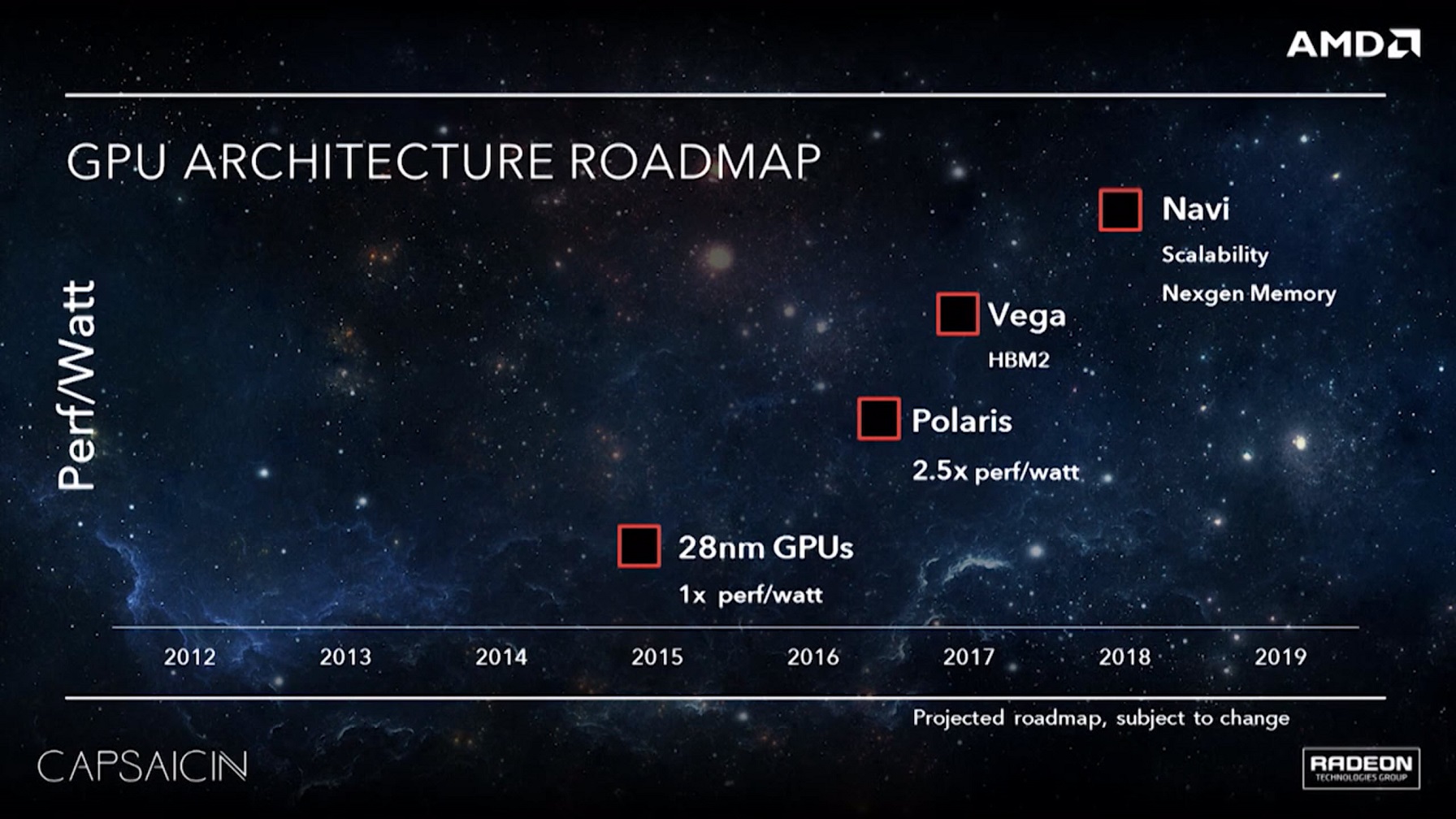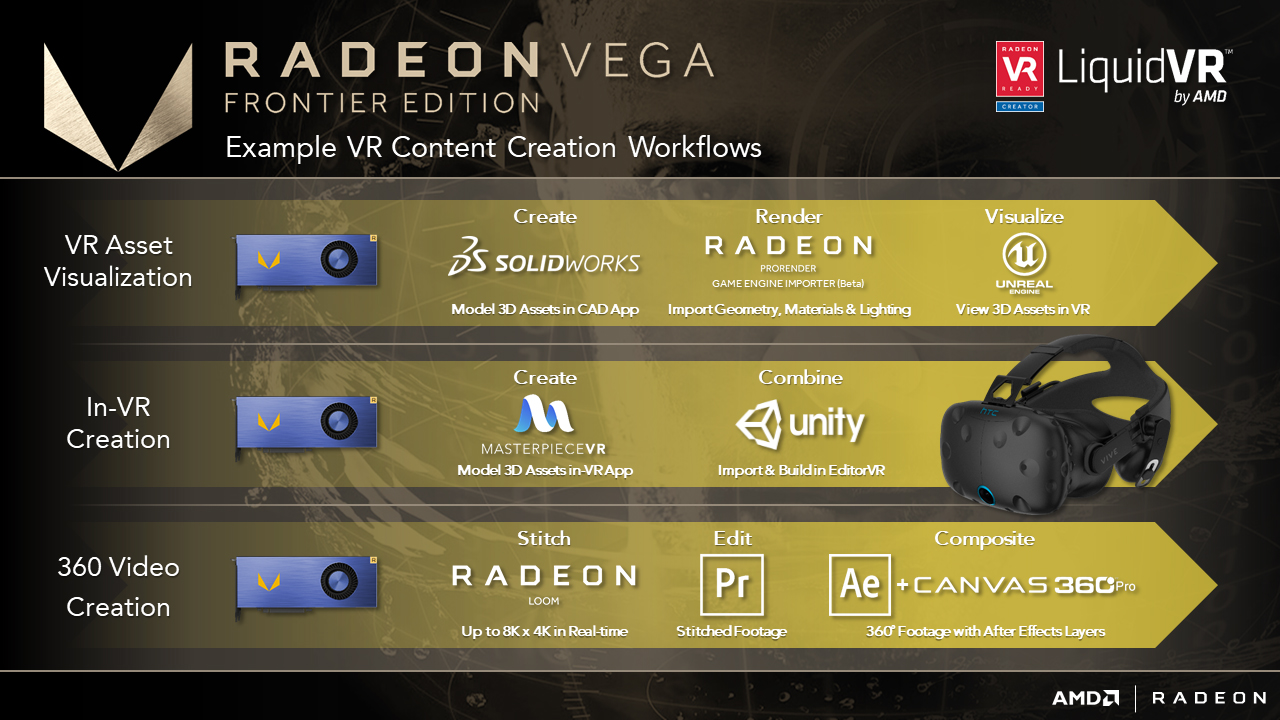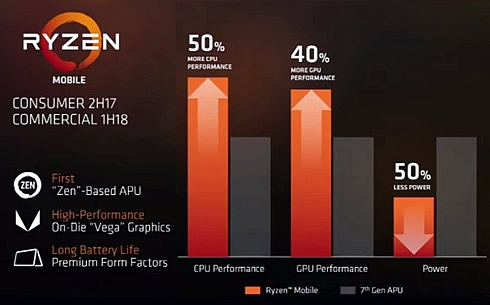_mockingbird
Gawd
- Joined
- Feb 20, 2017
- Messages
- 992
This thread is for rumors about Navi


Last edited:
Follow along with the video below to see how to install our site as a web app on your home screen.
Note: This feature may not be available in some browsers.

Somebody needs to start a "Navi Rumors" thread. I was going to, but didn't have the balls.

Only rumor I got is that Navi has taped out, just waiting on the EUV machines to be installed for mass production which I am guessing will take 6 months to 8 months.
Navi will so kick Volta butt! Because. Discuss, but if you don't agree, you're wrong.

Any source to this? I have never heard of it. I know originally it was early 2018. But now I am hearing late 2018. But AMD has said they have design teams working in parallel.
Tape out is 2nd half, expect that to be end of 2017 though, that is pretty much how AMD has been going thus far. Vega was to be 1st half of 2017 tape out, and it ended up just after that. Zen launch 2nd half of 2016 launch, that was end of 2016 launch. Polaris 2nd half of 2016 launch and it was end of 2016 launch.
Same with Vega launch too 1st half of 2017, and it came with FE end of 1st half.
Wouldn't that mean Navi would be getting released within 6 months of Volta?
It took 1 year after tape out for Polaris and Vega to come out. If they stay true to that, they end of 2018.
Probably fair but their claim is it will use some sort of next gen memory, so don't get your hope sup.I think Vega could have been here sooner. Driver might be problem since they still didn't feel comfortable activating DSBR. But they did show this shit working a while ago. I think they were truly screwed by their choice to use HBM2. Would it be too much to say it could actually launch by end of July 2018 a year after vega? If there are no delays in components?
But it will show you buttery smooth minimum FPS.It will launch with drivers that hide any type of FPS being shown by any software , because FPS won't matter.
I think Vega could have been here sooner. Driver might be problem since they still didn't feel comfortable activating DSBR. But they did show this shit working a while ago. I think they were truly screwed by their choice to use HBM2. Would it be too much to say it could actually launch by end of July 2018 a year after vega? If there are no delays in components?
The interesting thing here is Vega has an interesting memory controller that could definitely be something that is adopted acros the board by even NVIDIA. The problem as usual goes to who is actually going to optimize their games for it. We know Bethesda for some odd reason has gone full on AMD support, but not really anyone else.BY MY POWERS OF PROPHECY...
I WILL PREDICT THE LAUNCH OF NAVI!!!
1. IT WILL BE LATE
Navi will not hit when AMD first hints it to launch. In fact, it will probably be 2-3 quarters later than what even the most pessimistic of roadmaps predict. It will also be teased, announced and launched multiple times before anyone can actually get their hands on it.
2. IT WILL BE INEFFICIENT COMPARED TO NVIDIA'S THEN-CURRENT CARD
It won't hit the energy efficiency of Nvidia's cards. In fact, it may not even match Pascal at the high end. It's die-size will be bigger than similarly priced Nvidia cards, and it will not be as easy to OC.
3. IT WILL NOT BE ALL THAT IMPRESSIVE
Not to say it will be bad, rather, it won't break new ground, and it won't disrupt the market much at all. Dispite AMD's suggested MSRPs, the retail cards will rise in line to match simillarly performant Nvidia cards. It will not take the performance crown. It may have more VRAM per dollar than Nvidia's products, but that is about it.
4. IT WILL NOT HAVE ANY DISRUPTIVE TECHNOLOGY, REGARDLESS OF WHAT AMD CLAIMS
Regardless of what RTG says, the cards' memory architecture and core improvements won't count for much. It's most lauded features will really just result in 'being faster than Vega'. If anything, these new tech bits will only provide more leeway for AMD to make "drivers aren't ready" excuses.
HERE SPEAK'TH THE [H]ARD PROPHET.
MAY HIS WORDS BE SET IN STONE
The problem is release date for AMD. Even if they can magically get it on par with Volta, it'll probably come out after Volta had been out for over a year lol.Please don't be another Vega or Fury, PLEASE, get Navi right...
The interesting thing here is Vega has an interesting memory controller that could definitely be something that is adopted acros the board by even NVIDIA. The problem as usual goes to who is actually going to optimize their games for it. We know Bethesda for some odd reason has gone full on AMD support, but not really anyone else.
Just to stir things a little... images may break.







Memory crisis is only to reach exaflop compute levels.
Isn't that part of what steers product development, or do I misunderstand? From what I gather some of those projects are strong considerations for Nvidia and more recently AMD since they got grant money and agreed to invest in it with the US DOE, among other ... customers.
AMD needs HBM and the like for their GPU's, their GPU's need more bandwidth to sustain the performance they have
That's the assumption I've understood so far.
Wouldn't the current level of HBM2 memory performance limit the performance potential of RTG gaming products?
Would GDDR6 enable performance that AMD/RTG will not be able to match without using it?